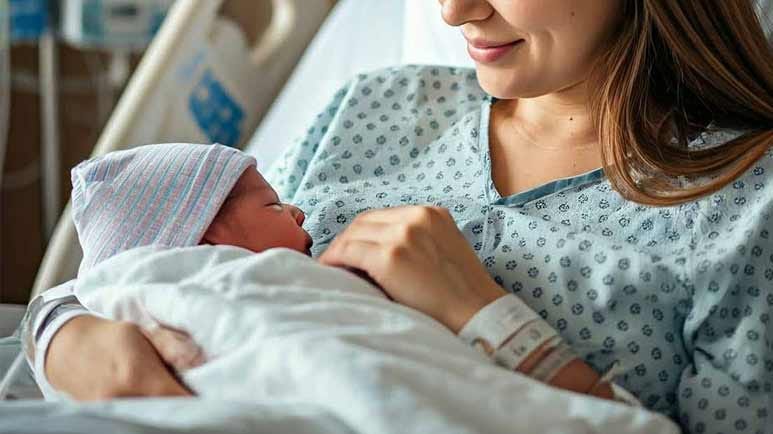New Study Reveals Overlooked Toll of C-Sections — More Pain, Less Sleep for Mothers
Description
STORY AT-A-GLANCE
More than one in five babies are now born by C-section, and the numbers are expected to reach nearly one-third of all births by 2030, despite many cases lacking clear medical necessity
Researchers from Stanford University found that C-section mothers were far more likely to experience severe postpartum pain and disrupted sleep, with over two-thirds reporting discomfort that interfered with rest and recovery
Nationwide data showed that women who delivered by C-section were 16% more likely to develop new sleep disorders within a year after birth, including insomnia, sleep deprivation, and sleep apnea
C-sections carry higher risks of infection, hemorrhage, blood clots, and complications in future pregnancies, while babies born this way face increased chances of respiratory distress, allergies, and autism
Many cesarean deliveries can be avoided with the right preparation. Choosing a provider who supports natural birth, staying physically active, managing stress, and maintaining a healthy weight all lowers your risk

Globally, more than one in five babies are delivered via cesarean section (C-section),1 a surgical procedure in which a baby is delivered through incisions in the mother’s abdomen and uterus. Some cesareans are medically necessary — for example, when the baby is breech, the placenta blocks the cervix, or a prior C-section increases delivery risks.2
Yet many procedures occur without a clear medical need, exposing mothers to serious risks when safer options might be possible.3 In fact, by 2030, C-sections are expected to account for nearly one-third of all global births.4 Recovery after a C-section is typically slower and more demanding than after vaginal birth, with healing that extends far deeper than the surface incision.
At the ANESTHESIOLOGY® 2025 annual meeting, researchers presented new evidence on how cesarean delivery influences postpartum recovery. Their study focused on the link between pain and sleep — two essential yet often overlooked factors in maternal health — to reveal how the mode of birth shapes postpartum healing and overall well-being.5
New Findings Reveal Postpartum Pain and Sleep Struggles After C-Section
In the featured study, researchers set out to understand how cesarean delivery affects a mother’s ability to rest, heal, and regain strength after birth. They compared women who delivered surgically with those who had vaginal births, combining personal interviews with large-scale national data to capture both lived experience and measurable outcomes.6 7
C-section mothers reported greater pain and disrupted sleep — In the qualitative analysis, 41 mothers were interviewed about their recovery. Of these, 24 had vaginal births, 11 had scheduled cesareans, and six had unplanned cesareans. More than two-thirds of mothers who delivered by C-section described severe pain that interfered with rest and daily activity.
<label class="hide-text" contenteditable="false">Text within this block will maintain its original spacing when published</label>Among them, 73% of those with planned surgeries and 67% of those with emergency procedures said their pain was strong enough to disturb sleep. In comparison, only 8% of women who gave birth vaginally reported similar discomfort.
Nationwide data also revealed higher sleep disorder risk after C-section — In the quantitative analysis, the researchers reviewed records from more than 1.5 million mothers who gave birth between 2008 and 2021.
<label class="hide-text" contenteditable="false">Text within this block will maintain its original spacing when published</label>The results showed that women who delivered by C-section were 16% more likely to experience new sleep disorders, such as insomnia, sleep deprivation, or obstructive sleep apnea, within one month to one year after childbirth. These findings highlight how postoperative pain and disrupted sleep often reinforce one another and persist well beyond hospital discharge.
Active pain management supports better recovery — Lead author Dr. Moe Takenoshita, a postdoctoral scholar in the Department of Anesthesia at Stanford University’s Center for Academic Medicine, stressed the importance of addressing pain early to prevent a cycle of sleeplessness, fatigue, and delayed healing.
<label class="hide-text" contenteditable="false">Text within this block will maintain its original spacing when published</label>She advised mothers to align rest with their baby’s sleep schedule whenever possible, avoid caffeine and alcohol during recovery, and incorporate gentle movement or relaxation techniques such as warm baths or deep breathing before bedtime.
“Those who are planning a C-section should understand that the procedure is linked to more severe pain after delivery and a higher risk of sleep disorders.
<label class="hide-text" contenteditable="false">Text within this block will maintain its original spacing when published</label>Anyone having sleep problems during pregnancy or after childbirth should discuss their concerns with their physician, who can evaluate the issue, make recommendations, and refer them to a specialist if necessary,” she noted.8
The Other Health Risks You Face with Cesarean Delivery
Beyond the increased risk of pain and sleep disturbances, cesarean delivery carries several other well-documented complications that are less common in vaginal birth, affecting your short-term recovery and long-term health. These include:9 10
Post-surgical infection — Between 3% and 20% of women develop an infection following a C-section.11 The incision may become red, swollen, painful, or produce discharge. Internal infections such as endometritis (inflammation of the uterine lining) can also occur, often presenting with fever, abdominal tenderness, heavy vaginal bleeding, and abn






